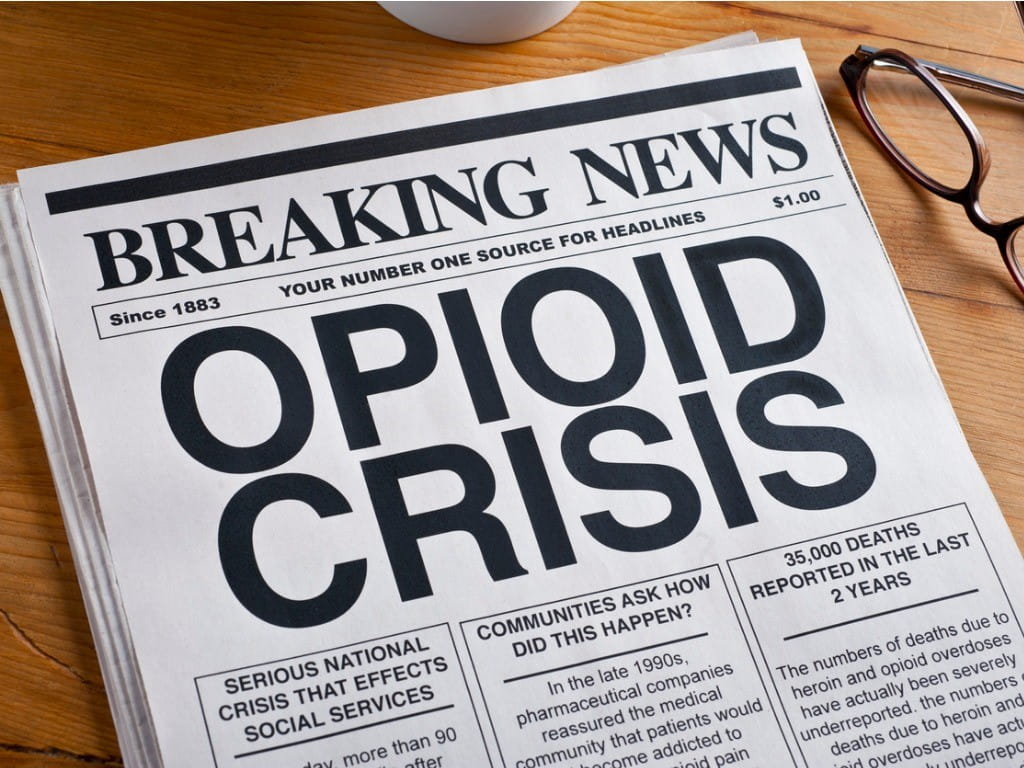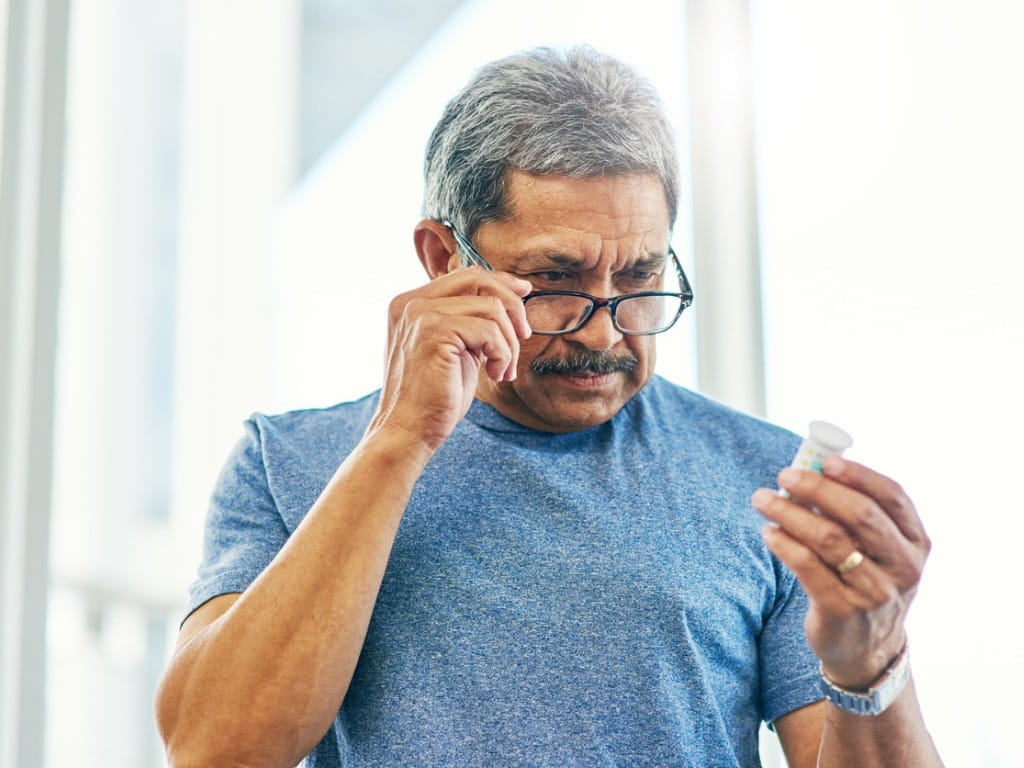History of the Opioid Epidemic: How Did We Get Here?

The Bottom Line
The opioid epidemic has evolved rapidly in recent years, starting with an increase in opioid prescriptions to treat chronic pain. To reduce risk and maximize the benefits of pain treatment options, the CDC issued guidelines for opioid prescribing which recommend non-opioid medications as the preferred first step when treating chronic pain. Listen to our podcast, Poison!, to learn more.

The opioid epidemic has occurred in three waves. The podcast episode, "Introduction to the Opioid Epidemic" explains these waves in greater detail. The first wave began in 1991 when deaths involving opioids began to rise following a sharp increase in the prescribing of opioid and opioid-combination medications for the treatment of pain. The increase in opioid prescriptions was influenced by reassurances given to prescribers by pharmaceutical companies and medical societies claiming that the risk of addiction to prescription opioids was very low. During this time, pharmaceutical companies also began to promote the use of opioids in patients with non-cancer related pain even though there was a lack of data regarding the risks and benefits in these patients. By 1999, 86% of patients using opioids were using them for non-cancer pain. Communities where opioids were readily available and prescribed liberally were the first places to experience increased opioid abuse and diversion (the transfer of opioids from the individual for whom they were prescribed, to others, which is illegal).
The second wave of the opioid epidemic started around 2010 with a rapid increase in deaths from heroin abuse. As early efforts to decrease opioid prescribing began to take effect, making prescription opioids harder to obtain, the focus turned to heroin, a cheap, widely available, and potent illegal opioid. The use of heroin increased in both sexes, the majority of age brackets, and all socioeconomic groups. Deaths due to heroin-related overdose increased by 286% from 2002 to 2013, and approximately 80% of heroin users admitted to misusing prescription opioids before turning to heroin. Heroin is commonly injected, which puts users at risk for injection-related diseases like HIV/AIDS, hepatitis B and C, skin infections, bloodstream infections, and infections of the heart.
The third wave of the epidemic began in 2013 as an increase in deaths related to synthetic opioids like fentanyl. The sharpest rise in drug-related deaths occurred in 2016 with over 20,000 deaths from fentanyl and related drugs. The increase in fentanyl deaths has been linked to illicitly manufactured fentanyl (not diverted medical fentanyl) used to replace or adulterate other drugs of abuse.
In an effort to reduce risk and maximize the benefits of available pain treatment options, the US Centers for Disease Control and Prevention (CDC) issued comprehensive guidelines for prescribing opioids for chronic pain outside of cancer treatment, palliative care, and end-of-life care. These prescribing recommendations say that non-opioid treatments are the preferred first step for treatment of chronic pain. Opioid medications should only be added after careful assessment of pain control and followed by regular evaluations of their continued need.
Attempts to change opioid prescribing patterns have been opposed primarily by indirect intervention by the pharmaceutical industry through lobbying and advocacy groups. These efforts include attempts to halt measures to restrict opioid overprescribing, efforts to undermine the CDC guidelines, and thwarting attempts to hold prescribers and pharmaceutical companies accountable. Researchers from two universities found that the opposition to the CDC guidelines was significantly more common among organizations that received funding from opioid manufacturers. An investigation by the US Senate Committee on Homeland Security and Governmental Affairs detailed the financial ties that exist between opioid manufacturers, advocacy groups, and medical professional societies. The report exposed patient advocacy groups and professional societies spending millions of dollars to promote messages and policies favoring the interests of the pharmaceutical industry.
Lindsy Liu, PharmD
Certified Specialist in Poison Information
Diana N. Pei, PharmD
Certified Specialist in Poison Information
Pela Soto, PharmD, BSHS, BS
Certified Specialist in Poison Information
Poisoned?
Call 1-800-222-1222 or
Prevention Tips
- Before receiving a prescription for an opioid drug, ask the prescriber if there are effective non-opioid treatments.
- Follow medication instructions carefully.
- Store medications in a safe and secure location away from children, pets, and those who might abuse them.
- Do not take opioid medications with alcohol, illegal drugs, or other medications that could affect breathing.
- Learn more about the opioid epidemic on our podcast.
This Really Happened
A 32-year-old woman was found unconscious after she snorted fentanyl for the first time. Paramedics were called and they gave her a dose of naloxone, and she woke up. In the ER she received another dose of naloxone because her breathing was dropping to a dangerous rate. She was also placed on oxygen. Poison Control advised that additional doses of naloxone should be kept handy and that the patient's breathing rate be monitored. Eight hours after arriving at the ER, she became unresponsive again and received a third dose of naloxone. Since the drug's effects typically do not last that long, Poison Control suspected that the fentanyl she snorted had been adulterated with another, longer-acting opioid.
For More Information
Fueling an epidemic (report two): exposing the financial ties between opioid manufacturers and third party advocacy groups. US Senate Committee on Homeland Security & Governmental Affairs; 12 Feb 2018 [accessed 1 Jun 2018].
References
Poisoned?
Call 1-800-222-1222 or
Prevention Tips
- Before receiving a prescription for an opioid drug, ask the prescriber if there are effective non-opioid treatments.
- Follow medication instructions carefully.
- Store medications in a safe and secure location away from children, pets, and those who might abuse them.
- Do not take opioid medications with alcohol, illegal drugs, or other medications that could affect breathing.
- Learn more about the opioid epidemic on our podcast.
This Really Happened
A 32-year-old woman was found unconscious after she snorted fentanyl for the first time. Paramedics were called and they gave her a dose of naloxone, and she woke up. In the ER she received another dose of naloxone because her breathing was dropping to a dangerous rate. She was also placed on oxygen. Poison Control advised that additional doses of naloxone should be kept handy and that the patient's breathing rate be monitored. Eight hours after arriving at the ER, she became unresponsive again and received a third dose of naloxone. Since the drug's effects typically do not last that long, Poison Control suspected that the fentanyl she snorted had been adulterated with another, longer-acting opioid.
